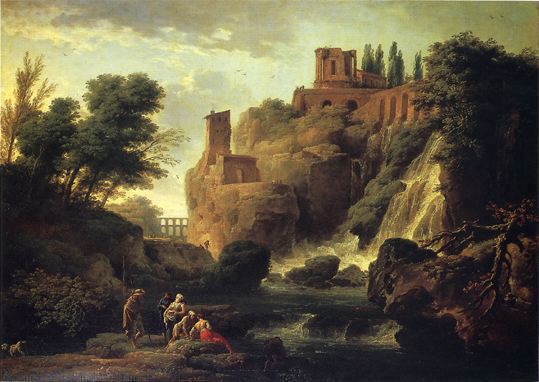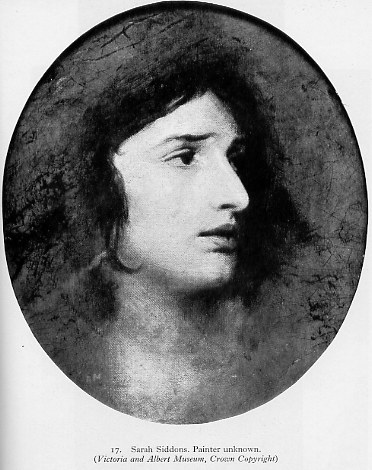

To ECW
February 28, 2004
Re: Romance of the Forest, Chs 13-14: Emotionally Drenched Vocabulary: Obsessively Repeated Words in Radcliffe and Her Psychological Pictorialism
Volume II's concluding chapters includes overlapping conflicts and struggles between the characters, some inward and exasperated or guilty, and some overt, angry, bullying, dismissive, and then again there are the desperate women. For me the most interesting of these configurations and the one driving the action at this point occurs between the Marquis and LaMotte and its most gripping passages are those where LaMotte remembers how he became a gambler and became entangled with violent and corrupt crews of men and those where LaMotte is plagued by his conscience.
Here is Radcliffe at her best when it comes to what has become popular and is thought central or necessary to novelistic art. The tale of gambling has verisimilitude: people in this period did fall into such desperate behaviors, and it was difficult to extricate oneself without committing some crime. LaMotte resisting the Marquis's demands that he help him rape or coerce Adeline into sex, and as will appear in next week's chapters (I suppose many have read ahead to these) murder her may be regarded as the high point of the book -- as there is a phrase the heights of despair so a nadir may constitute the heights of passion. Much of this is seen through Adeline's consciousness, but not all; sometimes Radcliffe uses free indirect style as brilliantly as the novelists whom critics sometimes claim invented the technique in the 19th century.
Little or smaller arcs of emotion are found in Madame de LaMotte's approach to her husband and his at first relenting into reciprocation of emotions and then drawing back, angry and distrustful once again. She at first avoids Adeline but then attempts to convey to Adeline her regret at her own complicity -- something Clarissa's mother never did; Mrs Harlowe only regretted her own suffering and resented her daughter for not yielding up body and soul.
Radcliffe has the strength that James says is the sine qua non for real for storytelling: she can picture her characters in ways that epitomize and make memorable their conflicts; she can capture gestures. For this modern reader there is still the problem of stilted dialogue and when I am more awake while reading I sometimes have to stifle (or fail to stifle) a laugh at the over-the-top melodrama of some of the lines between LaMotte and Adeline particularly; on the other hand, they talk money and he tells her that his life is in the Marquis's power -- both ways of talking are persuasive. We see how frightened of the Marquis is the honest physician. One lettre de cachet and a person is done for.
One might note her vocabulary in these chapters, the words that are obsessively repeated: restlessness, disturbance (of mind), violence, agitation, distressing, agony (of mind), (appearance of) tranquillity, disquiet, guilt, labyrinth, indefatigible, dreadful (this word rings changes on the sentences), passion, terror, uneasiness, sinking (into chairs), scarcely conscious, perplexity, (miserable) retrospection, solitude, anguish, perilous. Emotionally drenched vocabulary. Radcliffe carries on with her negative verbs too: unclose, unalloyed, unshut, unlock, and the disposition of the rooms to one another, the inn to the forest, the forest to the abbey remains obscure (another favorite word). People have probably noticed her epigraphs are often drawn from Shakespeare; there is a line given the Marquis which links him to Macbeth: "I will not affect to be more than man, and trust me those who do are less." This shows a strong writer as Radcliffe has turned a well-known line into her own idiom, and it doesn't feel forced at all.
Scott wrote a longish essay on Radcliffe in 1824 -- a year before he began his journal. He calls her a favorite author but does not overpraise: she lacks insight into the human heart, does not command the passions, does not imitate life or manners as they are actually lived. So in what lies her power: she pulls on fear, on awe, produces a phantasmagoria of external picturesqueness and splendid high wrought scenery into which the reader escapes; she writes melo- drames. Scott is much taken by _The Italian_ which he calls beautiful and goes over in detail some strong scenes between the hero of this book and Schedoni. I would say Radcliffe's depiction of La Motte and the Marquis is every bit as good; it just doesn't go on as long. Her heroines seem always to be turning to the dark hero-villain for help (La Motte, at Udolpho, Montoni, and Schedoni) and he then betrays her. Where she trusts, she is betrayed by the man's woman too -- except in the case of Schedoni where Olivia/Elvira remain at a distance and obscure to Ellena until near the end of the book.
Cheers to all,
Ellen
The Romance of the Forest: Charging Through After a Lull
I have now finished 'The Romance of the Forest' (though I will go back to look again at the weekly sections) and must agree it does start charging through again after the lull, with the secondary heroine Clara wandering around playing her lute - I really liked this part, which is almost like a short story inserted into the main text, but it does slow down the action. I've also just read Chloe Chard's introduction to the World's Classics edtion, but, like her footnotes, I find it isn't really on my wavelength - would anybody recommend any other pieces on this novel, preferably ones I might be able to track down without access to an academic library? Many thanks.
Cheers,
Judy
Romance of the Forest: Good Books and Essays on
In response to Judy, while there are essays in journals and anthologies on Radcliffe and one or other of her novels (mostly though on Udolpho and The Italian), there are not many full size books. People who know of Radcliffe and are aware of how central she is to the configuration of the gothic like to think she is well known outside gothic and academic circles, but she really isn't. The books available on her through general libraries and stores are Norton's Mistress of Udolpho (good but more a biography than a literary study) and Robert Miles, The Great Enchantress. I've tried Miles more than once, but for some reason I never get very far. She is treated in many books on the gothic, some of which have excellent chapters on her; one of the best that comes to mind is Coral Ann Howells's Love, Mystery and Misery (this was an actual title of a gothic romance in the 1790s); there are good essays (two of which are on Radcliffe) in Kenneth Graham's Gothic Fictions. A hostile one is in Judith Fleenor's Female Gothic. It's sometimes said the French really like Radcliffe more than the English and that may be, but the situation is the same there: essays in journals and anthologies, a couple of books on Radcliffe, but most books are on gothic with a chapter or two on Radcliffe in them. I mention the French to show the general situation.
Ellen
To ECW
March 3, 2004
Re: Robert Miles's The Great Enchantress and Judith W. Fisher's "The Stage on the Page: Sarah Siddons and Ann Radcliffe"
I thought I'd add an addendum to the remarks on works about Ann Radcliffe I made last night. I got farther into Robert Miles than ever before and he's very good. Indeed I'd recommend this book as a good introduction to Radcliffe's works as gothic and meditating a vision between Scott and De Sade. He sets the novels in the context of the era too, and tells what is known about the biography.
I have a glossy paperback, ISBN 0-7190-3829-4 -- with a reproduction of a painting of Mrs Siddons as Il Penseroso (by Richard Westall) on the cover. It is thought that Radcliffe was much impressed and influenced by Mrs Siddons's performances.
I'll also copy and paste a paragraph of a review I recently wrote which contained a perceptive essay on Radcliffe's art:
In a recent volume edited by Linda Troost, Eighteenth Century Women Judith W. Fisher's "The Stage on the Page: Sarah Siddons and Ann Radcliffe" is an innovative influence study: Fisher shows that Siddons's theatrical techniques offered Radcliffe images which helped Radcliffe to produce an illusion of depth psychology. The gothic melodrama of Radcliffe's texts are one of its strengths; her and Siddons's depictions of crying and distress (which modern readers "tend to laugh at" or "be embarrassed by") were "real and in context, very moving." Through a creative inward look at treatises on acting Fisher is able to document suggestive connections between the usually hidden passions, outward behavior and art of a woman of letters and an actress, and between theatre and the female gothic.
Ellen
